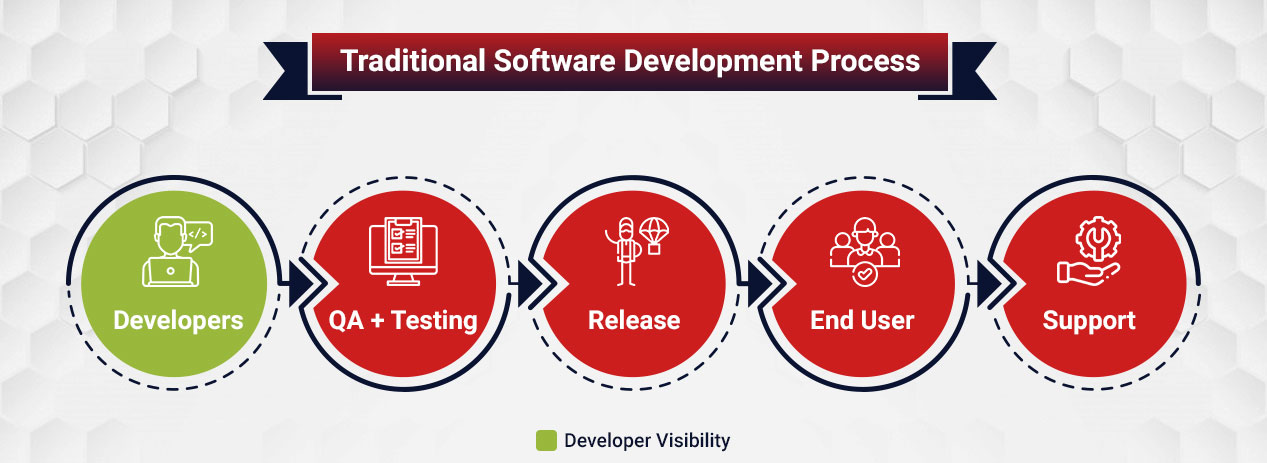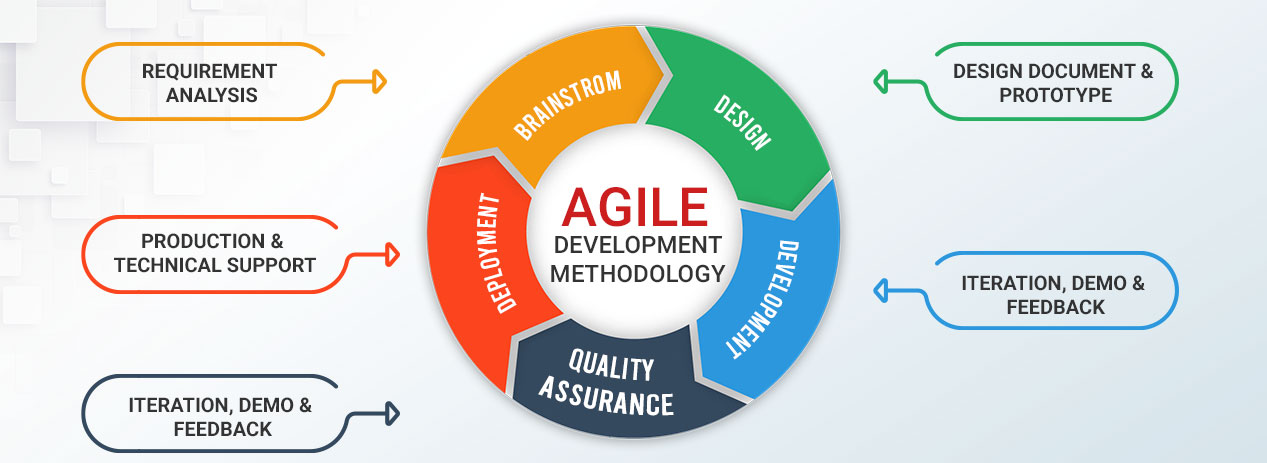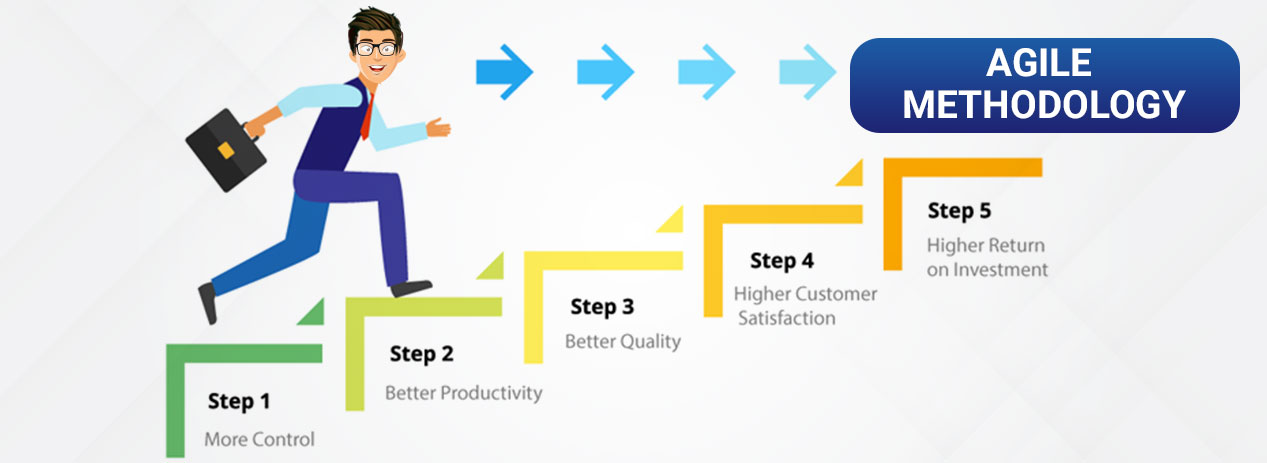Today when there is already so much of uncertainty and competition at the same time, you really need to deliver fast and on-time, whichever industry are you in – Soft lens or software industry. In software development industry, apart from timeliness, the flawlessness is equally crucial, any of these cannot be traded for the other. Of course, there has to be the right standard approach – whether it is based on agile methodology or traditional. Whether to go for traditional development method or switch over to agile, for software companies, this has always been the dilemma.

This blog carries the idea about determining the principles pertaining to both these development methods, in all aspects such as features, advantages, disadvantages, and of course the reasons why has agile methodology been adopted far and wide and is preferred by many over traditional method.
Table Of Content
Table Of Content
- Traditional Approach – Developing Software the Conventional Way
- What Made Traditional Software Development that Important?
- But, Traditional Methodology Has Its Own Disadvantages
- So, What is Agile Development? How Does It Help?
- Traditional to Agile Development? Why the Switch-Over?
- More Flexibility
- Teamwork with Constant Collaboration
- Faster Detection of Bugs and Fixes
- Constant Improvements for Faster Product Release in the Market
Traditional Approach – Developing Software the Conventional Way

Traditional software development method refers to the waterfall method, V-model development, etc.
The process is comprised of the Business Requirement Specification (BRS) that refers to understanding every specification of the client requirement first, followed by System Requirement Specification (SRS), Development, Unit Testing also known as Smoke Testing, followed by Integration Testing and Alpha-Beta Testing. All this while, QC is performed to be sure if the right product is developed.
What Made Traditional Software Development that Important?
Traditional testing has always been a major role player in the delivery of quality products. The development/QA are performed simultaneously. The requirement is divided into smaller ones and assigned to individual developers based on their specialization.
But, Traditional Methodology Has Its Own Disadvantages
There is no particular time frame to govern the process. Once the requirements are well understood the process begins, which is not conducted in a specific pace. The reporting time and product delivery may take longer.
So, What is Agile Development? How Does It Help?
Agile software development involves understanding the client requirement and then breaking the development process into various sprints.
What is a Sprint?
A sprint is a short period of time taken by the Scrum team to complete a fixed amount of tasks. The completion of every Sprint is followed by reporting. Even a complex project is simplified for the development of quality product on time, which is depicted by the Burndown Chart.
A Burndown chart plays a crucial role in agile development process, by illustrating the pace at which the development team works by plotting user stories against the time elapsed. So, it helps predict the team’s performance.
Learn about 7 Qualities You Should See Before Hiring A Software Development Firm

As the process on, the product delivery gets much faster. The faster is the delivery, the quicker is received the feedback from the client. This allows further resolution of issues that come from the customer’s side. The changes are incorporated much faster. The right product is released quicker, following the agile approach.
Every resource has its own shortfalls, and so has agile methodology.
As the issues keep coming up and get resolved then and there, to lead to new iterations, the documentation becomes difficult to carry on. It often stays limited, and so it becomes difficult to communicate the other teams about how did it go.
Since there is no or less documentation involved, the clarity about certain aspects of the development and testing stays blurred. There remain no proven methods to follow and so every project has to begin with scratch, which eventually takes lot of time.
Traditional to Agile Development? Why the Switch-Over?

It is reported that, 87% of companies used agile software development model.
Today more and more businesses are switching over to agile methodology. They prefer agile over conventional now. Well, there have to be many reasons behind it. Let’s dig out some!
More Flexibility
Whenever you have to work under strict rules, you cannot be flexible enough to innovate. That’s what happens when you follow the traditional approach. Whereas, the agile testing methodology shows the testing teams a simultaneous path alongside the development one. They don’t need to follow the same path over and over again, and therefore, can be flexible at certain levels to become more innovative in their approach. Quicker analysis, faster adoption of new means and methods, and staying in the flow, make the entire software development and testing process faster.
Teamwork with Constant Collaboration
It is a very well-known fact teamwork brings the best of everything. Same happens when the agile methodology is followed. In traditional method, just one person is accountable for the entire process, whereas in agile, teams work in collaboration, to share different ideas and innovate superior products.
Faster Detection of Bugs and Fixes
Agile development, also known as sprint development, allows quick detection of bugs and their resolution. Since it is all about the teamwork, so every team member is accountable for success of the project. As a result, they give their best as a team.
Constant Improvements for Faster Product Release in the Market
As the QA and QC processes walk along with the development one, the product gets ready for its faster release in the market. Even the latest versions are released much faster. The user feedback is received time to time, only for further improvements in the product, so that the premium quality products are released every time. Timeliness of delivery eventually pays.
Know about Why Mandating Regression Testing After Every Software Update Is Crucial
Let’s Wrap It Up!
Evolution in software development, QA and QC have been happening at a constant pace. Agile development has led to some ground-breaking outcomes in software development market, which largely propel business performances. With custom software development as our forte, we have been implementing modern trends and techniques in our development processes, which has allowed us to deliver premium quality products every time.
Know about our enterprise-grade software development model.

